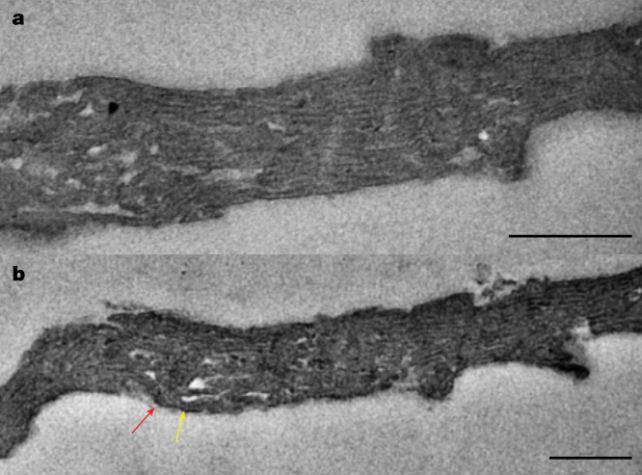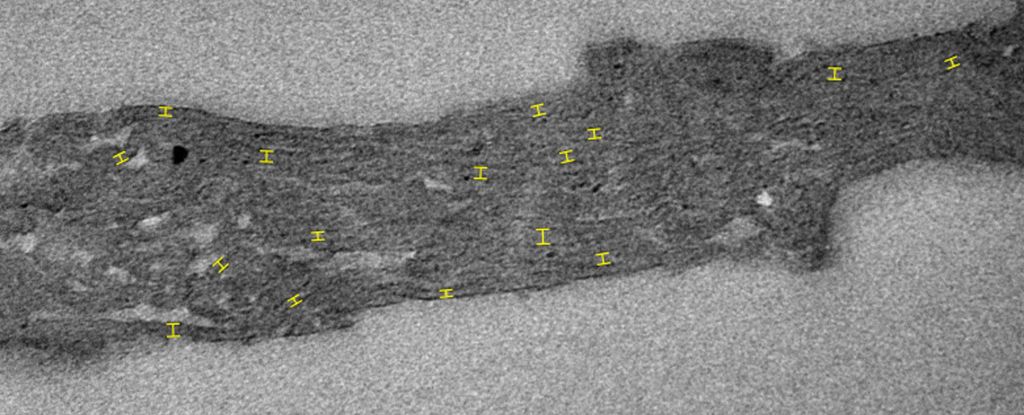Tiny fossils that have spent nearly 2 billion years locked up in chunks of ancient rock are giving us the earliest evidence yet for photosynthesis on Earth.
In the McDermott Formation in the desert of northern Australia, tiny structures called thylakoids have been discovered in what are thought to be fossilized cyanobacteria dating back to 1.75 billion years ago.
These structures are found inside the cells of photosynthetic organisms today that contain the pigment chlorophyll, used to absorb the light for photosynthesis.
This means that the microfossils represent the oldest direct evidence for photosynthesis, giving us a new minimum age for the emergence of thylakoid-bearing cyanobacteria, and a new tool for understanding early Earth ecosystems, and how life emerged on our planet.
“Our study provides direct evidence for the presence of metabolically active cyanobacteria performing oxygenic photosynthesis,” writes a team led by paleomicrobiologist Catherine Demoulin of the University of Liège.
The findings imply that a detailed analysis of other fossils could identify more structures like it, pinpointing the moment photosynthesizing structures were gobbled up and put to work by the earliest forms of complex algal cells.
Photosynthesis, which harnesses sunlight to convert water and carbon dioxide into glucose and oxygen, might seem like something plants and algae are just doing quietly to themselves over there, but it is the basis for the survival of nearly all living things.
Not only do photosynthetic organisms form the foundation of most food webs, their metabolic processes fill the atmosphere with the breathable oxygen most of us need to survive.
We know that, early in Earth’s history, there wasn’t a lot of oxygen floating freely in the atmosphere and oceans. However, different lines of geochemical evidence reveal that oxygen levels suddenly skyrocketed some 2.4 billion years ago in what is known as the Great Oxidation Event. It’s unclear what caused it, but one possibility is the emergence of photosynthetic organisms.
The earliest undisputed microfossil evidence of cyanobacteria is an organism called Eoentophysalis belcherensis, dated to up to 2.018 billion years ago. But fossils are often difficult to interpret, and their internal structures don’t always survive intact. And not all cyanobacteria species have thylakoids.

Demoulin and her colleagues used different high-resolution microscopy techniques to probe the external and internal structures of microfossils of a species known as Navifusa majensis, thought to be cyanobacteria. And, within the bodies of the single-celled organisms from two fossil beds, they found thylakoid membranes.
These fossils were from the Grassy Bay Formation in Canada, dated to up to 1.01 billion years ago; and the McDermott Formation, stretching as far back as 1.75 billion years ago. This extends the fossil record of thylakoids back by a whopping 1.2 billion years – and means that oxygenic photosynthesis must have evolved before that time.
But what we still don’t know is whether it evolved in time to contribute to the Great Oxidation Event. Only finding, and carefully studying, even older fossils could give us an answer to this burning question.
“The discovery of preserved thylakoids within N. majensis reported here provides direct evidence for a minimum age of about 1.75 billion years ago for the divergence between thylakoid-bearing and thylakoid-less cyanobacteria,” the researchers write.
“We predict that similar ultrastructural analyses of well-preserved microfossils might expand the geological record of oxygenic photosynthesizers, and of early, weakly oxygenated ecosystems in which complex cells developed.”
The research has been published in Nature.





